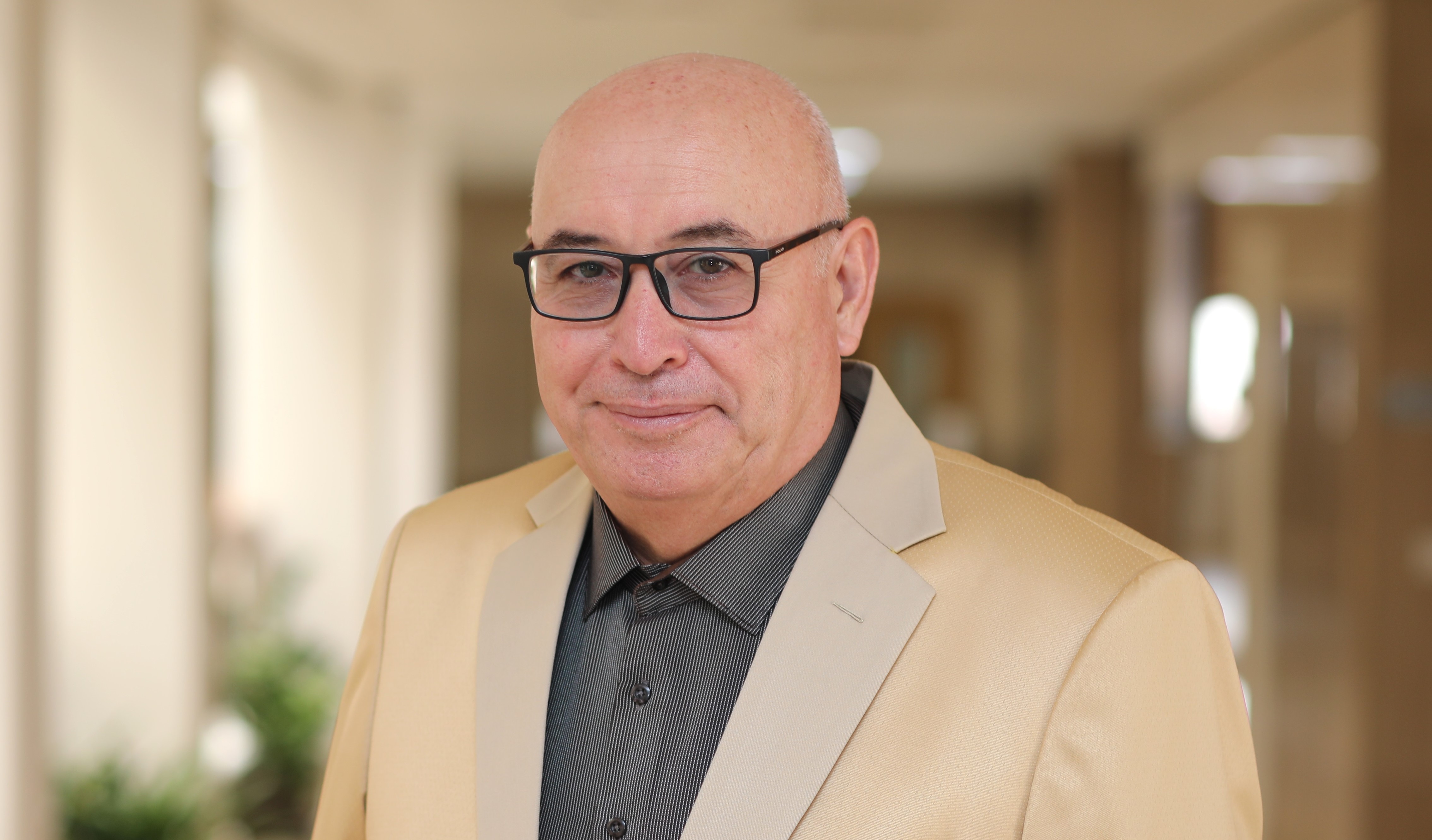
Surgical Treatment of Breast Cancer Dr. Rami Yaghan: Significant Advancements in Therapeutic and Cosmetic Breast Cancer Surgeries
Arabian Gulf University
08 Oct, 2024
Surgical treatment remains the cornerstone of management for most cases of breast cancer. In certain instances, surgery alone may suffice; however, in other situations, patients may require additional treatments post-operatively.
In the following interview, we speak with Dr. Rami Yaghan, a consultant in oncological and breast surgery, and head of the surgical department at the University of the Arabian Gulf, as well as a consultant in general and breast surgery at the University Medical Centre – King Abdullah Medical City, to explore the latest surgical procedures available for the treatment of breast cancer.
Breast cancer is the most prevalent cancer among women and poses significant challenges that adversely affect both their physical and psychological well-being, with wider implications for families and communities.
The incidence of breast cancer in Bahrain and other parts of the Arab world remains relatively moderate when compared to rates currently observed in Europe and the United States.
Owing to advances in early detection methods, alongside improvements in treatment modalities, both quantitatively and qualitatively, the prognosis for breast cancer has markedly improved. The current recovery rate exceeds 90% for those diagnosed early and receiving appropriate treatment.
The treatment modalities for breast cancer typically encompass:
- Surgical intervention
- Chemotherapy
- Hormonal therapy
- Radiotherapy
- Immunotherapy using antibodies in certain cases.
It is notable that multiple therapeutic approaches may be utilised for an individual patient, depending on the stage of the disease and its biological and hormonal characteristics.
This article aims to provide a succinct overview of surgical treatment, highlighting the critical role of surgical intervention in the management of breast cancer.
Surgical treatments include the following methods:
Mastectomy:
Historically, the treatment of breast cancer has often been synonymous with total mastectomy, a fact that has historically instilled fear and anxiety in women diagnosed with this condition.
However, it is important to highlight that, in many cases, total mastectomy can now be avoided, particularly in light of advancements in early detection methods and the increasing awareness among women regarding breast health.
Breast-Conserving Surgery:
In this approach, only the tissue surrounding the tumour is removed, eliminating the need for total mastectomy. Radiation therapy is typically administered as an adjunctive procedure to ensure comprehensive local control of the disease.
This surgical method is associated with satisfactory cosmetic outcomes and provides local disease control that is comparable to that achieved through total mastectomy.
Skin and Nipple-Sparing Mastectomy with Silicone Implants:
In this technique, the breast is completely excised while preserving the skin and nipple. Advanced silicone implants are then used to reconstruct the breast's natural appearance.
Over the past two decades, there has been remarkable progress in this area, with an increasing number of women opting for this type of treatment multiple times. This surgical intervention frequently results in aesthetically pleasing outcomes, and patient satisfaction with their quality of life post-surgery is generally high compared to other surgical options.
It is imperative to acknowledge that several factors influence the selection of the most appropriate surgical intervention for each patient, including:
- The location of the tumour within the breast
- The size of the tumour
- The preferences of the patient
- The existence of multiple tumours within the same breast
- The potential for complications in each patient
It is crucial to emphasise that even following total mastectomy, breast reconstruction surgeries (of which there are various types) can still be performed after the completion of chemotherapy, yielding satisfactory cosmetic results.
Furthermore, it is important to note that during any of the aforementioned surgical procedures, surgeons typically conduct an additional procedure involving the lymph nodes located in the armpit. This step is essential for predicting the expected recovery rate, determining the necessity for additional treatments (such as chemotherapy), and achieving comprehensive local control of the tumour in the axillary region.
In conclusion, I would like to underscore the following points:
- Total mastectomy is not an obligatory procedure and can often be avoided in many cases.
- The necessity for total mastectomy does not inherently indicate that the disease is advanced or that it is incurable.
- There are numerous surgical approaches that offer both complete disease control and satisfactory cosmetic and functional outcomes.
- The patient's decision plays a pivotal role in selecting the most suitable surgical intervention.
- There is no single surgical approach appropriate for all patients; the final decision is typically made by a multidisciplinary team encompassing various necessary specialisations.
I would also like to highlight that chemotherapy is commonly administered following surgery in cases where it is warranted. Nevertheless, there are circumstances where chemotherapy is provided prior to surgery to enhance the likelihood of avoiding total mastectomy for certain patients.
In conclusion, I wish for a swift and complete recovery for all women diagnosed with breast cancer, and I encourage all women to engage proactively with early breast cancer detection programmes in accordance with the guidelines issued by health authorities in the Kingdom.
